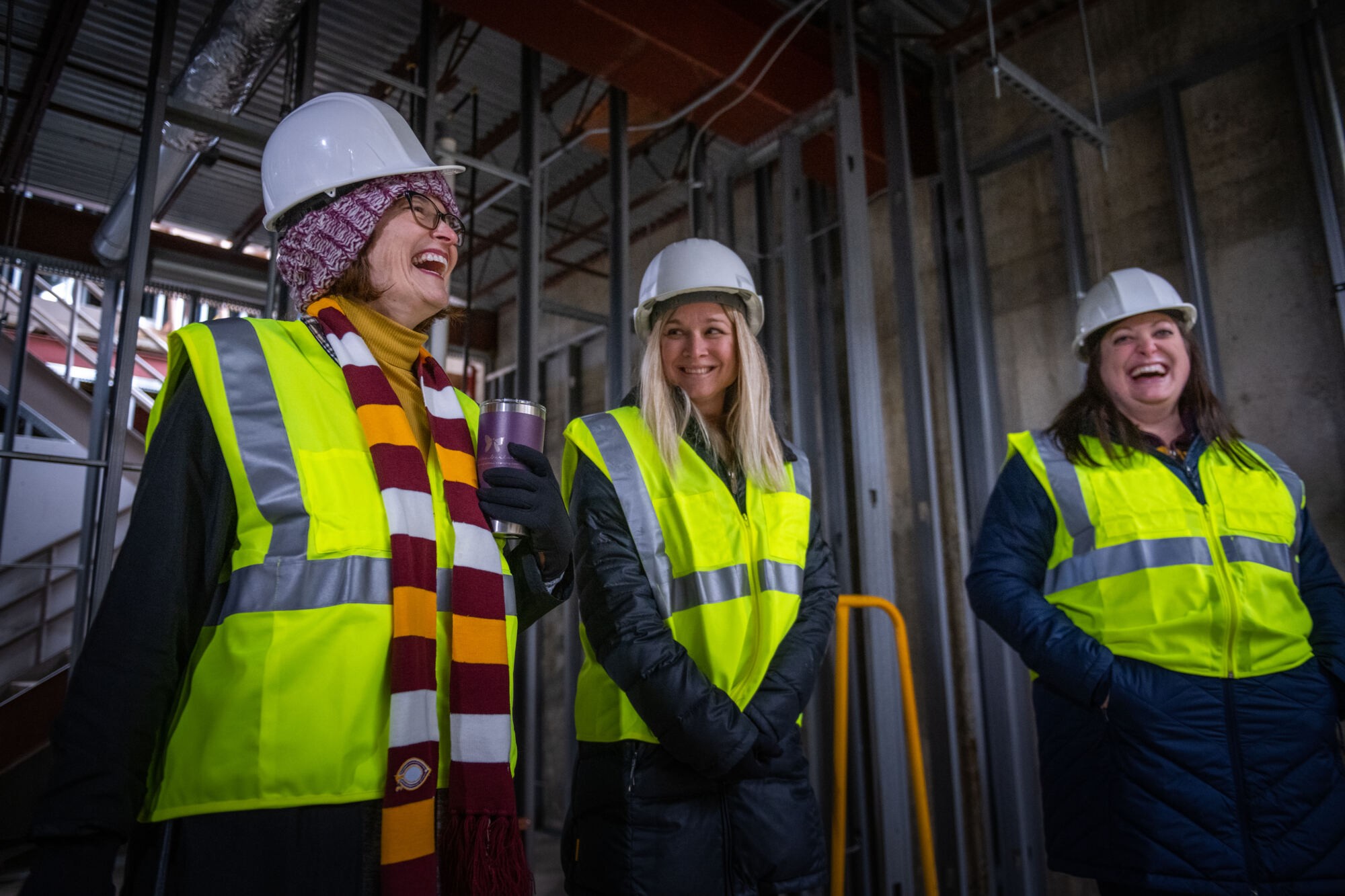The dean and department chairs of the Sanford Heimarck School of Health Professions (SHSHP) got a first look at their new teaching labs and offices in the Heimarck Center currently under construction. The Heimarck Center, being built on the corner of 12th Ave. and 8th St. S., will be the collective home for Concordia’s health professions programs.
 Excited comments on the increased size of labs and the amount of sunlight in the space were repeated throughout the tour. “That’s going to feel so great,” said Dr. Shelly Gompf, director and assistant professor of healthcare administration.
Excited comments on the increased size of labs and the amount of sunlight in the space were repeated throughout the tour. “That’s going to feel so great,” said Dr. Shelly Gompf, director and assistant professor of healthcare administration.
President William Craft, whose father ran a construction business, joined the tour and joked about having always loved a half-finished construction site. With framing done, the architectural renderings are quickly becoming a reality. 
“I’m excited about the synergy between the Integrated Science Center and the Heimarck Center,” Craft said.
The new building means new opportunities for faculty and students. There will now be a nutrition assessment lab, counseling space, exam rooms, and cutting-edge tools, such as a “Bod Pod,” which uses air displacement to determine a person’s percentage of lean mass versus body fat.
“It's common among elite, professional athletes,” said Dr. Meredith Wagner, chair and associate professor of nutrition, dietetics, and exercise science. “Major research universities will have bod pods, but there are not many private colleges that have equipment of this caliber. So, it's unique to Concordia.”

Innovative teaching spaces, such as the high-fidelity simulation labs, will allow students to learn hands-on skills in a replicated hospital setting, by using computerized manikins (medical-training mannequins).
“They can do everything a human can except drive a car,” said Dr. Stephen Stapleton, chair and professor of nursing. “They cry. They sweat. Their pupils change. We can speak through them and create heart, lung, and bowel sounds. We can simulate almost every nursing procedure. It's a way of doing high-intensity patient interactions, like a cardiac arrest, in a controlled environment.”
 With one-way windows, the professors can observe how students react.
With one-way windows, the professors can observe how students react.
“We don't interact much because we expect the students to be acting as if it's a real hospital room,” said Dr. Gwen Halaas, dean of the SHSHP. “But we're there, and it's a safe space for them to make mistakes and learn from them.”
The observation rooms will also be used for students learning to conduct increasingly important telehealth visits as well as home visits.
“My head is spinning seeing this and thinking of all the ways we can practice social work home visits,” said Kelli Gast, assistant professor of social work. “It takes time to get good at those visits. This will be perfect for students.”
 As the program director of exercise science, Dr. Emily Huber-Johnson’s face lit up when she saw the size of the human performance lab, a significant expansion.
As the program director of exercise science, Dr. Emily Huber-Johnson’s face lit up when she saw the size of the human performance lab, a significant expansion.
“We will be able to be more of a ‘fly on the wall’ and have our students practice in a more realistic setting,” Huber-Johnson said. “We can coach them so they will gain confidence for when they have to do the real thing.”
Once construction is complete, all pre-health professions will be in one, centralized location for the first time.
 “This space is for interprofessional learning and interdisciplinary learning,” Halaas said. “It's a space where all of our students and faculty are going to be able to come and learn together right here. We can always be thinking about the systems and the business of health care. It'll be a new experience for students who have been in their major tracks without having this opportunity to learn with each other.”
“This space is for interprofessional learning and interdisciplinary learning,” Halaas said. “It's a space where all of our students and faculty are going to be able to come and learn together right here. We can always be thinking about the systems and the business of health care. It'll be a new experience for students who have been in their major tracks without having this opportunity to learn with each other.”
“It just feels right,” Wagner said. “We're all excited, and I know our students will be super excited about this.”
Construction is on track and is slated to be completed in time for the start of the Fall 2023 semester.
